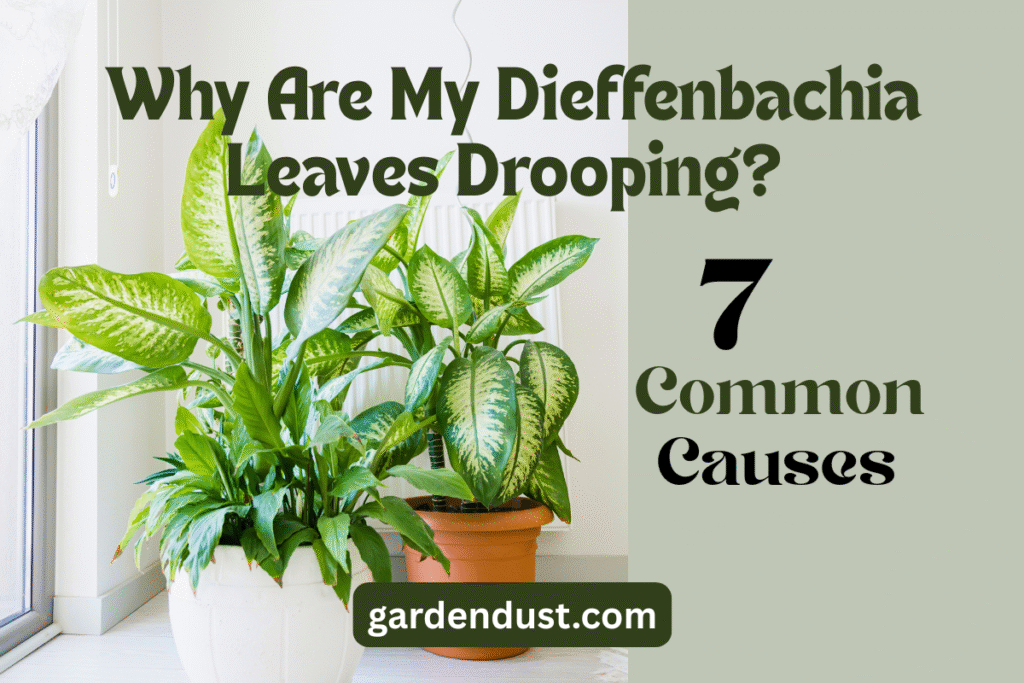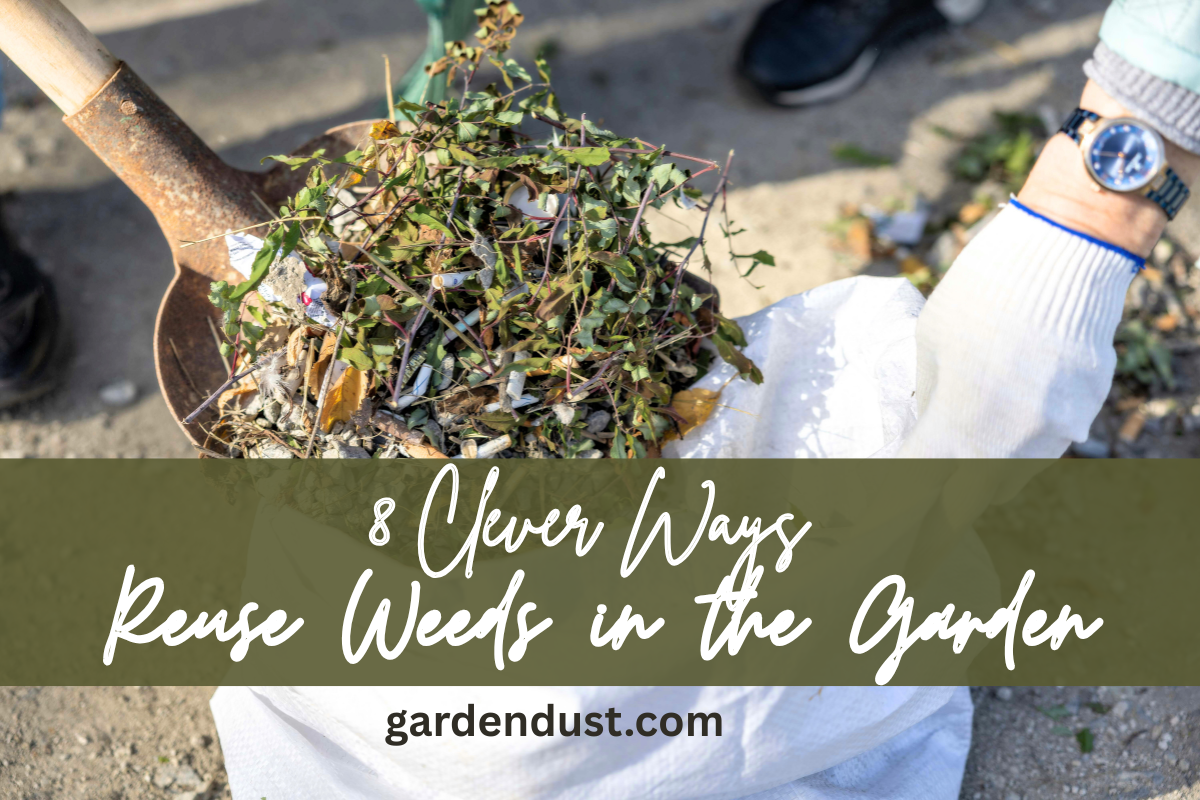Dieffenbachia, commonly known as Dumb Cane, is a stunning tropical houseplant known for its large, patterned leaves and ability to thrive in indoor conditions. However, when its lush leaves begin to droop and turn unsightly, it can be alarming for plant lovers. Drooping leaves are often the first signal that something is wrong—and timely intervention can save your plant.
If you’ve found yourself asking, “Why are my Dieffenbachia leaves drooping?”, you’re not alone. In this comprehensive guide, we’ll explore the 7 most common causes of drooping leaves in Dieffenbachia and offer practical solutions to revive your plant.
1. Overwatering: The Most Common Culprit
Dieffenbachia is highly sensitive to overwatering. Consistently soggy soil can lead to root rot, a fungal condition that restricts oxygen to the roots. Without oxygen, roots begin to decay, causing the leaves to droop, yellow, or even fall off.
Signs of Overwatering:
- Mushy or blackened roots (if checked)
- Yellowing lower leaves
- Drooping foliage even when soil appears wet
- A sour or musty smell from the potting mix
How to Fix It:
- Check the soil moisture: Stick your finger 1–2 inches into the soil. If it’s wet and sticky, avoid watering.
- Improve drainage: Make sure your pot has drainage holes. Consider using a well-aerated soil mix that includes perlite or orchid bark.
- Repot if needed: If you suspect root rot, remove the plant, cut off rotting roots, and repot in fresh soil.
- Water properly: Water only when the top 1–2 inches of soil feel dry.
2. Underwatering: A Silent Stressor
While overwatering gets more attention, underwatering is equally damaging. If you forget to water or let the soil dry out completely for too long, the plant becomes dehydrated. Lack of water disrupts nutrient flow, making leaves limp and lifeless.
Signs of Underwatering:
- Dry, brittle leaves
- Soil pulling away from the edges of the pot
- Crisp brown tips or edges on leaves
- Drooping, especially in younger leaves
How to Fix It:
- Rehydrate the soil: Water thoroughly until excess flows out the bottom of the pot. Let it sit and then empty the saucer.
- Soak if needed: If soil is extremely dry and compacted, soak the pot in water for 15–30 minutes to rehydrate evenly.
- Establish a watering schedule: Typically, watering every 7–10 days is ideal, but frequency depends on season and indoor climate.
- Monitor humidity: Dry indoor air can accelerate dehydration. A humidity tray or humidifier can help.
3. Low Humidity Levels
Dieffenbachia thrives in humid, tropical conditions. When kept in dry indoor air—especially during winter or in air-conditioned rooms—it may lose moisture too quickly, leading to droopy, dry leaves.
Signs of Low Humidity:
- Leaf tips or edges turn brown and crisp
- General drooping despite proper watering
- New leaves emerge deformed or struggle to unfurl
How to Fix It:
- Use a humidifier: This is the most reliable method to raise humidity.
- Create a humidity tray: Place a tray filled with pebbles and water beneath the pot (without the pot sitting directly in water).
- Group plants together: Plants release moisture into the air, so clustering them raises local humidity.
- Mist occasionally: Light misting helps, though it’s not a long-term solution.
4. Improper Lighting Conditions
Dieffenbachia prefers bright, indirect light. Too much direct sun can scorch the leaves, while too little light weakens the plant, causing it to become leggy and droopy.
Signs of Light Issues:
- Scorched, sunburned spots on leaves (too much sun)
- Pale, limp, or stunted leaves (too little light)
- Leaning toward the light source
- Overall droopiness despite correct watering
How to Fix It:
- Relocate the plant: Place it near a north or east-facing window where it receives bright, indirect light.
- Diffuse harsh light: Use sheer curtains to filter intense sun.
- Rotate regularly: Turn the plant every few weeks to promote balanced growth.
- Supplement with grow lights: In darker homes, a full-spectrum grow light can help.
5. Pest Infestation
Pests such as spider mites, aphids, mealybugs, and thrips can attack your Dieffenbachia. These sap-sucking insects drain moisture and nutrients from the plant, causing leaves to droop, yellow, or die.
Signs of Pest Infestation:
- Sticky residue (honeydew)
- Tiny webs or crawling insects on leaves and stems
- Speckled, discolored, or curling leaves
- General weakness and drooping
How to Fix It:
- Inspect your plant: Check both sides of the leaves and along the stems.
- Isolate immediately: Prevent the spread of pests to other plants.
- Treat with neem oil or insecticidal soap: Spray thoroughly and repeat weekly until pests are gone.
- Rinse the plant: A strong stream of water can dislodge many pests.
- Keep clean: Regularly wipe leaves with a damp cloth to remove dust and monitor for pests.
6. Temperature Stress
Dieffenbachia prefers consistent temperatures between 18–24°C (65–75°F). Sudden temperature drops, cold drafts, or exposure to heaters and air conditioners can shock the plant and lead to drooping.
Signs of Temperature Stress:
- Leaves droop suddenly after a cold night
- Blackened or mushy spots from cold damage
- Leaf curl or drop
- Plant located near windows, radiators, or vents
How to Fix It:
- Move away from drafts: Keep the plant away from open windows, doorways, and air vents.
- Avoid cold floors or windowsills: Insulate pots if necessary.
- Keep temperature stable: Avoid placing Dieffenbachia near fluctuating heat sources.
- Provide warmth during winter: Maintain indoor temperatures above 60°F (15°C).
7. Nutrient Deficiency or Over-Fertilization
Dieffenbachia needs nutrients to maintain lush foliage. Lack of essential nutrients like nitrogen, potassium, or magnesium can lead to weak, droopy leaves. On the flip side, too much fertilizer can burn the roots and cause similar symptoms.
Signs of Nutrient Issues:
- Pale or yellowing leaves
- Drooping and slow growth
- Brown tips or leaf edges (salt burn from excess fertilizer)
- White crust on soil surface
How to Fix It:
- Feed moderately: Use a balanced liquid houseplant fertilizer (like 20-20-20) every 4–6 weeks during spring and summer.
- Avoid overfeeding: Dilute fertilizer to half-strength to avoid root burn.
- Flush the soil: Run water through the pot for a few minutes to remove excess salts if over-fertilized.
- Repot if needed: If nutrient imbalance persists, change to fresh soil.
Bonus Tips to Prevent Drooping in Dieffenbachia
1. Use the Right Pot Size-A pot that’s too large retains too much moisture, while a too-small pot can constrict roots. Choose a pot 1–2 inches wider than the root ball.
2. Keep a Care Journal-Track watering days, feeding, and temperature fluctuations. Patterns often reveal the underlying cause of drooping.
3. Prune Damaged Leaves-Snip off any dead or overly droopy leaves to help the plant redirect energy to healthy growth.
4. Practice Patience-After correcting the problem, it can take a week or more for Dieffenbachia to perk up. New growth is the best sign of recovery.Conclusion
Dieffenbachia leaves droop for a variety of reasons, but the good news is that most issues are easily reversible with the right care. Whether it’s watering mistakes, humidity problems, pests, or lighting errors, identifying the cause early can help your plant recover quickly.
In summary, here are the 7 most common causes of drooping Dieffenbachia leaves:
- Overwatering
- Underwatering
- Low humidity
- Improper lighting
- Pest infestation
- Temperature stress
- Nutrient imbalance
By paying attention to the signs and making a few adjustments, your Dieffenbachia can bounce back with vigor—rewarding you once again with its gorgeous tropical foliage. Happy Gardening….






